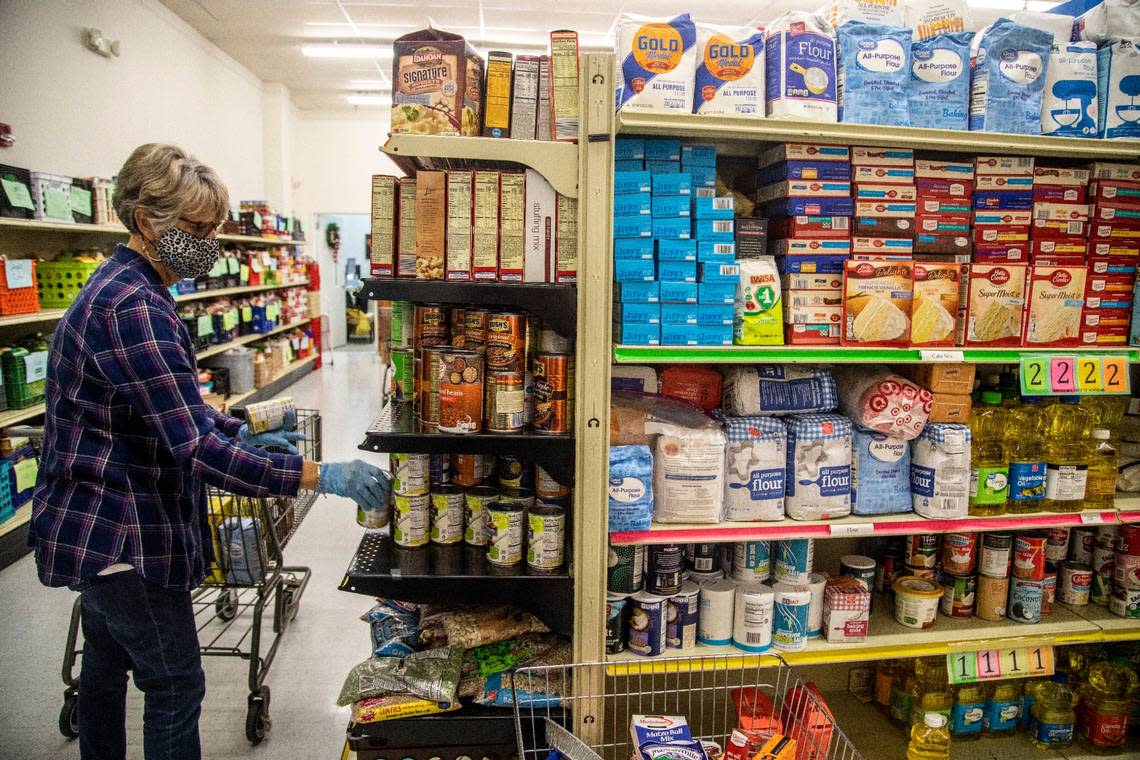1 in 10 people in Wake County are food insecure. An updated plan seeks to bridge the gap.

More than 100,000 people in Wake County don’t have enough food or a way to always get it.
The face of hunger has changed, said Melvin Acosta, vice president of operations and logistics for the Inter-Faith Food Shuttle. The food bank distributes about 10 million pounds of food across seven counties, more than half of it in Wake County.
“It is no longer those individuals who are living below the poverty line,” Acosta said. “It’s a lot of those single mothers, one-income households, because they have to make decisions with inflation. The fastest, or the easiest way, for them to recoup some money is to cut the food budget.”
It’s hard to pay part of an electric bill or half the rent. But families can cut their food spending and go to food pantries and food banks to offset what they lost, he said.
The Wake County Board of Commissioners approved an update to its Food Security Plan on Monday that could use about $7.3 million in American Rescue Plan funding to help. The county received $217 million from the federal COVID relief legislation and has about $209 million left to spend.
The plan seeks to grow community gardens, connect local farmers to food pantries, expand mobile food markets, fund community health workers and continue emergency food boxes.
The initial plan was approved in 2018, and Wake County Cooperative Extension began updating it last summer.
“We’re just trying to move our community beyond just stop-gap measures,” said Katherine Williams, Cooperative Extension director. “To really be strategic with investments that are mutually beneficial to our growers, to our agribusiness community and to those most in need.”
Nearly 1 in 10 Wake residents go hungry
Feeding America, the nonprofit that Wake County uses to measure food insecurity, shows about 104,000 people didn’t always have enough healthy food in 2020, the latest data available. That’s about 9.5% of people in Wake County, across demographics.
The U.S. Department of Agriculture defines food insecurity as a “lack of access, at times, to enough food for an active, healthy life.” The local numbers are calculated by using a national survey.
“One of the good things that it is happening is that the plan brought in community partners who are currently doing this work together to see how we can eliminate duplication of services and maximizing our buying power,” Acosta said.
Small groups and food pantries may be buying their food at cost from local stores. Larger food banks, like Inter-Faith, often purchase food directly at a savings. And smaller nonprofits and organizations can use the distribution logistics of the larger food banks to get the food to where people are.
Mobile markets can be set up in neighborhoods whose residents need food but may lack transportation to a food bank.
“They’ve got to catch an Uber. They’ve got to get on the bus to go and pick up a box of groceries,” Acosta said. “Now you’re bringing it into the community where they can keep that money and utilize it for what they need.”
Williams is most excited about connecting people to healthy foods and foods that appeal to them for cultural reasons.
“That really moves into medically appropriate foods,” Williams said. “So many limited-resource families struggle with diabetes and other health challenges and being able to get access to healthy food on a regular basis. Most of us take that for granted. The first foundation to good health is having access to nutritious food.”






